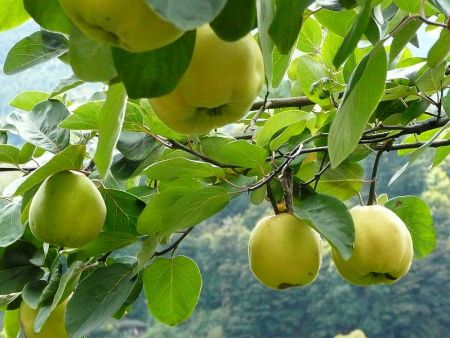Folks in various Slow Food circles are suddenly rallying around the quince, which I featured on my site just a week ago.
Possibly with us since Biblical times, the quince was traded at middle eastern crossroads before making its way around the Mediterranean and across the Atlantic to Thomas Jefferson’s garden, only to become relatively neglected in more recent eras.
That seems to have changed, as the somewhat homely fruit has recently become the improbable star of cookbooks, restaurants, and home cooks.
Ben Watson, an author and food activist with Slow Food USA, proclaimed, “The quince is the poster child of Slowness. It’s lovely and fragrant but pretty much inedible unless transformed by peeling, coring and cooking. I think it is poised for a comeback.”
Watson has been involved with Slow Food’s Ark of Taste project, which is an extremely exciting effort to catalog and promote all kinds of delicious foods that are in danger of extinction as we move toward mass production of fewer varieties of foods. I urge you to visit the Ark of Taste web site to see tantalizing photos and learn about wonderful heirloom fruits and other foods, and where to find them.
More on quince’s comeback, history and harvesting can be found in this delightful Los Angeles Times piece.
Also just in, courtesy of Food News Journal: “French foodie Stevie Parle turns to Provence for a perfect quince crumble.” This from the Guardian. (His crumble actually looks and sounds to me like a crisp, which coincidentally is my favorite dessert. I’ll have to try to make some!)



























